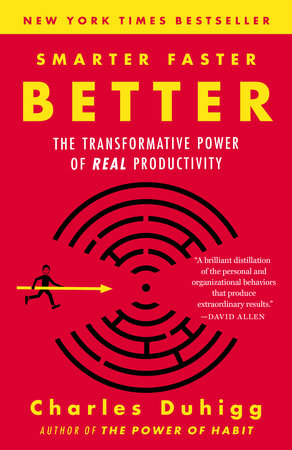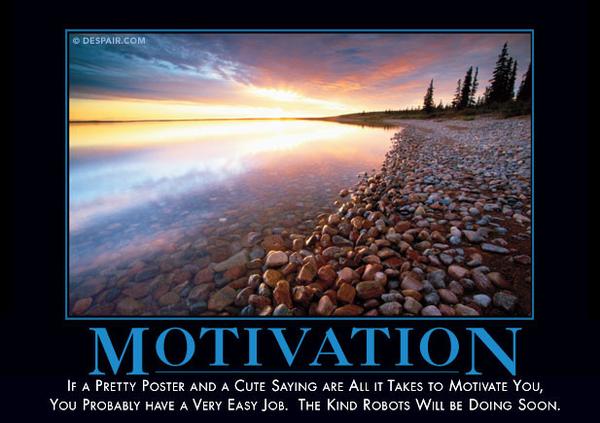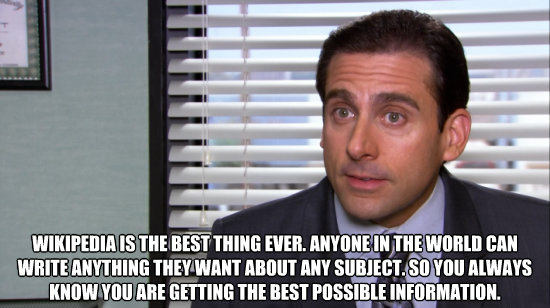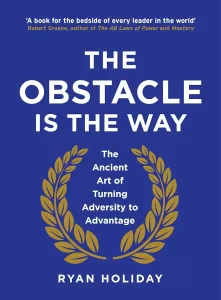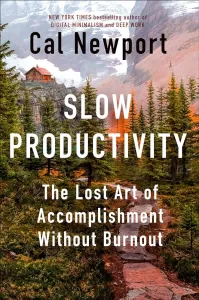Book Review: “Smarter Faster Better”
Book: Smarter Faster Better by Charles Duhigg
Reviewer: Bobby Powers
My Thoughts: 7 of 10
I loved Charles Duhigg's first book, The Power of Habit, so I was excited to see he had released a new business/psychology mash-up. Smarter Faster Better explains how to leverage our brain's hardwiring to increase productivity. Covering topics from motivation to teamwork, Duhigg shares how we can perform with greater efficiency and lead our teams to accomplish higher-reaching goals.
Takeaways from the Book
“Productivity, put simply, is the name we give our attempts to figure out the best uses of our energy, intellect, and time as we try to seize the most meaningful rewards with the least wasted effort. It’s a process of learning how to succeed with less stress and struggle. It’s about getting things done without sacrificing everything we care about along the way.”
Motivation
- “Self-help books and leadership manuals often portray self-motivation as a static feature of our personality…But scientists say motivation is more complicated than that. Motivation is more like a skill, akin to reading or writing, that can be learned and honed…The trick, researchers say, is realizing that a prerequisite to motivation is believing we have authority over our actions and surroundings. To motivate ourselves, we must feel like we are in control.”
- “When people believe they are in control, they tend to work harder and push themselves more. They are, on average, more confident and overcome setbacks faster.”
- “You know when you’re stuck in traffic on the freeway and you see an exit approaching, and you want to take it even though you know it’ll probably take longer to get home? That’s our brains getting excited by the possibility of taking control. You won’t get home any faster, but it feels better because you feel like you’re in charge.” -Mauricio Delgado
- “This is a useful lesson for anyone hoping to motivate themselves or others, because it suggest an easy method for triggering the will to act: Find a choice, almost any choice, that allows you to exert control. If you are struggling to answer a tedious stream of emails, decide to reply to one from the middle of your inbox.”
Teams
- Google’s People Analytics team undertook a study code-named Project Oxygen to determine why some managers were more effective than others. “Project Oxygen found that a good manager (1) is a good coach; (2) empowers and does not micromanage; (3) expresses interest and concern in subordinates’ success and well-being; (4) is results oriented; (5) listens and shares information; (6) helps with career development; (7) has a clear vision and strategy; (8) has key technical skills.”
- Another Google People Analytics’ project, Aristotle, investigated what makes high-performing teams. They found five key norms:
- Teams need to believe that their work is important.
- Teams need to feel their work is personally meaningful.
- Teams need clear goals and defined roles.
- Team members need to know they can depend on one another.
- Most importantly, teams need psychological safety.
- “There are always good reasons for choosing behaviors that undermine psychological safety. It is often more efficient to cut off debate, to make a quick decision, to listen to whoever knows the most and ask others to hold their tongues. But a team will become an amplification of its internal culture, for better or worse. Study after study hows that while psychological safety might be less efficient in the short run, it’s more productive over time.”
- "The best tactic for establishing psychological safety is demonstration by a team leader. It seems like fairly minor stuff, but when the leader goes out of their way to make someone feel listened to, or starts a meeting by saying ‘I might miss something, so I need all of you to watch for my mistakes,’ or says, ‘Jim, you haven’t spoken in a while, what do you think?,’ that makes a huge difference.” -Amy Edmondson
- Another research project—this one undertaken by psychologists from Carnegie Mellon and MIT—reached similar results: “It was the norms, not the people, that made teams so smart. The right norms could raise the collective intelligence of mediocre thinkers.” Two behaviors were shared by all high-performing teams:
- “All the members of the team spoke in roughly the same proportion, a phenomenon the researchers referred to as ‘equality in distribution of conversational turn-taking.’”
- “The good team tested as having ‘high average social sensitivity’—a fancy way of saying that the groups were skilled at intuiting how members felt based on their tone of voice, how people held themselves, and the expressions on their faces.”
Focus
- “In the age of automation, knowing how to manage your focus is more critical than ever before.”
- "We aid our focus by building mental models—telling ourselves stories—about what we expect to see.”
- "Envision what will happen. What will occur first? What are potential obstacles? How will you preempt them? Telling yourself a story about what you expect to occur makes it easier to decide where your focus should go when your plan encounters real life.”
- A large research project conducted at a midsize recruiting firm found that “the firms’ most productive workers, its superstars, shared a number of traits”: (1) “They tended to work on only five projects at once—a healthy load, but not extraordinary.” (2) “They were signing up for projects that required them to seek out new colleagues and demanded new abilities.” (3) They were “drawn to assignments that were in their early stages.” (4) “They loved to generate theories—lots and lots of theories, about all kinds of topics, such as why certain accounts were succeeding or failing, or why some clients were happy or disgruntled, or how different management styles influenced various employees…The superstars were constantly telling stories about what they had seen and heard. They were, in other words, much more prone to generate mental models.”
Goal Setting
- GE helped initiate SMART goals as well as STRETCH goals.
- “Some 400 laboratory and field studies [show] that specific, high goals lead to a higher level of task performance than do easy goals or vague, abstract goals such as the exhortation to ‘do one’s best.’” -Edwin Locke and Gary Latham
- “Making yourself break a goal into its SMART components is the difference between hoping something comes true and figuring out how to do it.” -Gary Latham
- SMART goals occasionally fail because they don’t evaluate whether the goal itself is important or trivial. Always make sure you’re doing the right things.
- “Numerous academic studies have examined the impact of stretch goals, and have consistently found that forcing people to commit to ambitious, seemingly out-of-reach objectives can spark outsized jumps in innovation and productivity.”
- “The reason why we need both stretch goals and SMART goals is that audaciousness, on its own, can be terrifying. It’s often not clear how to start on a stretch goal. And so, for a stretch goal to become more than just an aspiration, we need a disciplined mindset to show us how to turn a far-off objective into a series of realistic short-term aims.”
Innovation
- “Creativity is just connecting things.” -Steve Jobs
- “A lot of the people we think of as exceptionally creative are essentially intellectual middlemen. They’ve learned how to transfer knowledge between different industries or groups.” -Uzzi
- “We can create the conditions that help creativity to flourish. We know, for example, that innovation becomes more likely when old ideas are mixed in new ways. We know the odds of success go up when brokers—people with fresh, different perspectives, who have seen ideas in a variety of settings—draw on the diversity within their heads. We know that, sometimes, a little disturbance can help jolt us out of the ruts that event the most creative thinkers fall into, as long as those shake-ups are the right size.”
Absorbing Data
- “Our brains crave reducing things to two or three options. So when we’re faced with a lot of information, we start automatically arranging it into mental folders and subfolders and sub-subfolders.” -Eric Johnson
- “When information is made disfluent, we learn more.”
- “Recording a speaker’s comments via longhand is both harder and less efficient than typing on a keyboard…writing is more disfluent than typing, because it requires more labor and captures fewer verbatim phrases. When the researchers looked at the test scores of those two groups, however, they found that the hand writers scored twice as well as the typists in remembering what a lecturer said."
Think you’d like this book?
Other books you may enjoy:
Work Rules! by Laszlo Bock
Getting Things Done by David Allen
The Effective Executive by Peter Drucker
Other notable books by the author:
The Power of Habit
